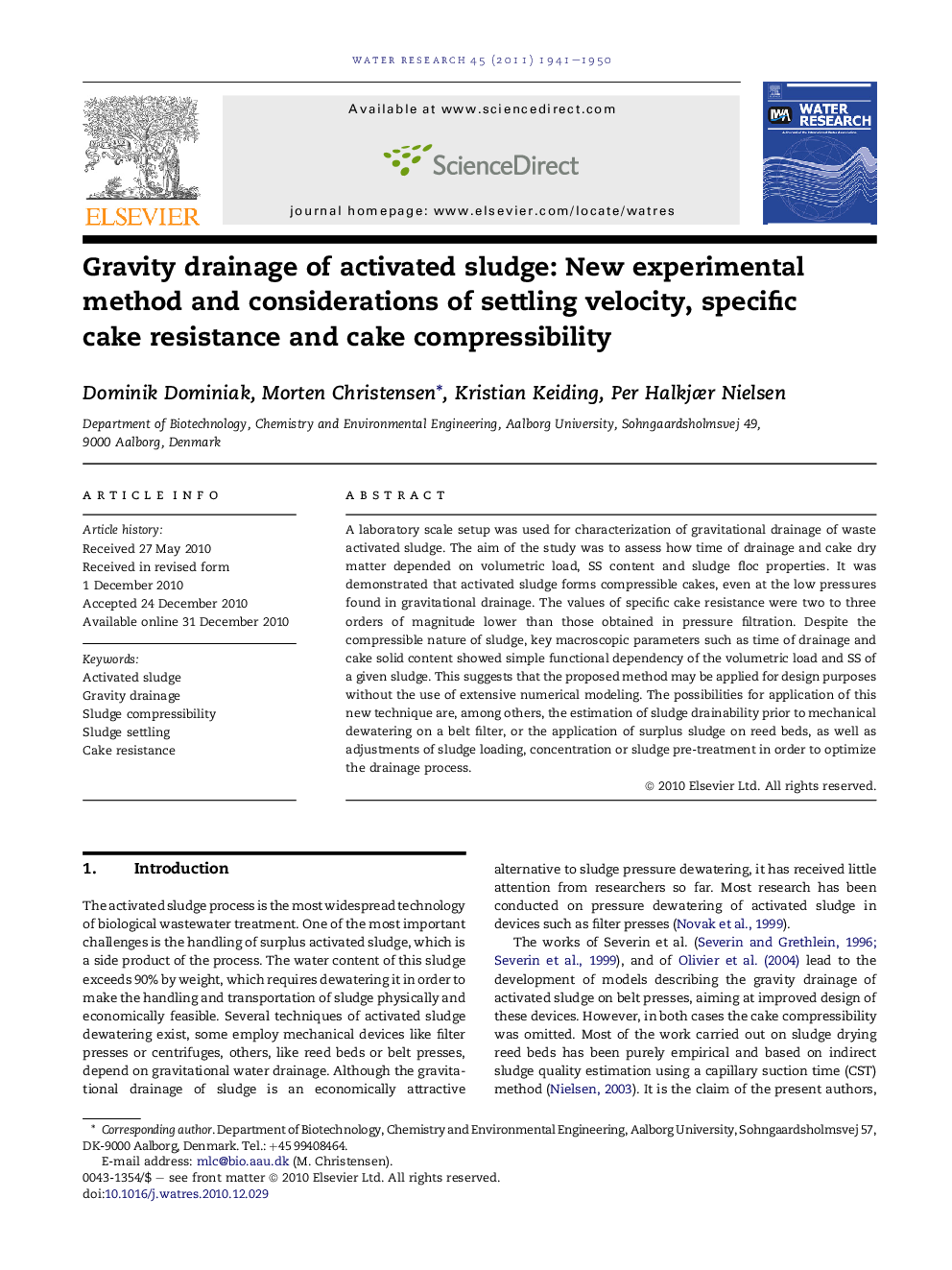| Article ID | Journal | Published Year | Pages | File Type |
|---|---|---|---|---|
| 4483208 | Water Research | 2011 | 10 Pages |
A laboratory scale setup was used for characterization of gravitational drainage of waste activated sludge. The aim of the study was to assess how time of drainage and cake dry matter depended on volumetric load, SS content and sludge floc properties. It was demonstrated that activated sludge forms compressible cakes, even at the low pressures found in gravitational drainage. The values of specific cake resistance were two to three orders of magnitude lower than those obtained in pressure filtration. Despite the compressible nature of sludge, key macroscopic parameters such as time of drainage and cake solid content showed simple functional dependency of the volumetric load and SS of a given sludge. This suggests that the proposed method may be applied for design purposes without the use of extensive numerical modeling. The possibilities for application of this new technique are, among others, the estimation of sludge drainability prior to mechanical dewatering on a belt filter, or the application of surplus sludge on reed beds, as well as adjustments of sludge loading, concentration or sludge pre-treatment in order to optimize the drainage process.
Research highlights► A simple lab scale setup has been developed to measure drainage properties i.e., settling velocity, specific cake resistance and cake compressibility. ► The specific cake resistance increases linearly on the volumetric load. ► The final dry matter content is a function of both feed load and concentration.
